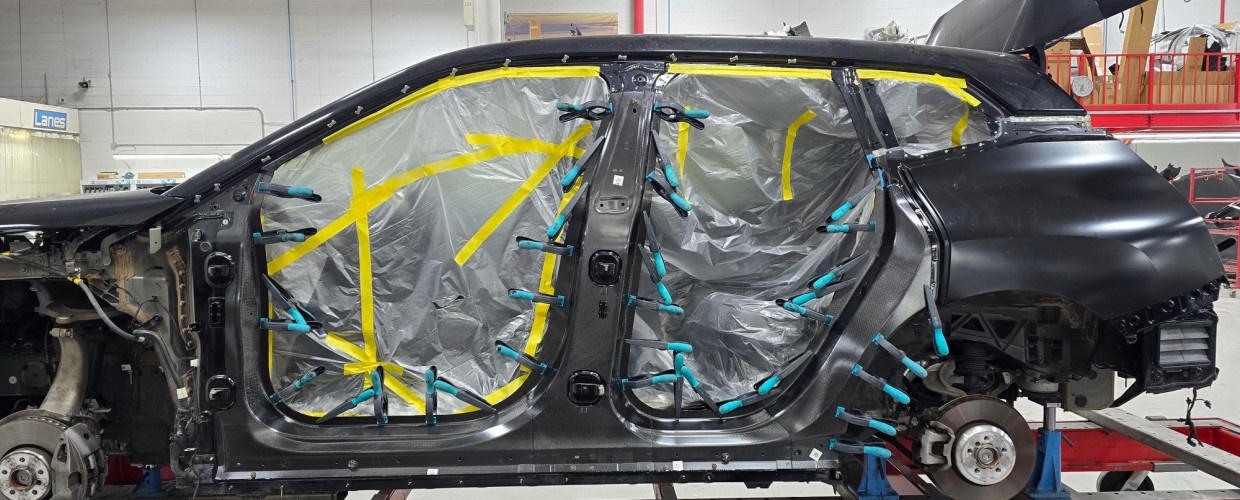Call Us: 905-845-1441
24 Hour Towing &
Accident Assistance: 905-845-1441
Accident Assistance: 905-845-1441
Carbon Fiber Structural Repairs
Repairing carbon fiber structural components is quite different from aluminum repairs due to the unique properties of carbon fiber. Carbon fiber is strong, lightweight, and stiff, but it is also brittle and can crack or delaminate under impact, which requires specific repair methods.
Here are key differences in repairing carbon fiber compared to aluminum:
- Material Behavior:
- Carbon Fiber: It's a composite material that consists of woven fibers, which are bonded with resin. When damaged, it doesn't "bend" like aluminum but tends to crack or delaminate.
- Aluminum: Being a metal, aluminum is more malleable and can be bent back into shape without compromising the material too much, although it can still suffer from fatigue and weakened structural integrity.
- Repair Techniques:
- Carbon Fiber: Repairing carbon fiber typically involves removing damaged layers, cleaning the area, and then layering new carbon fiber sheets, which are bonded using epoxy resin. This method restores the material's strength and stiffness. Sometimes, a vacuum bagging process is used to ensure the resin is evenly distributed.
- Aluminum: Aluminum repairs typically involve welding or replacing damaged sections. Straightening or reshaping the metal can often restore its integrity. Also, utilizing bonding and riveting operations when replacing compromised panels.
- Specialized Equipment:
- Carbon Fiber: The repair requires specialized tools such as cutting tools for composite materials, vacuum bagging equipment, and curing ovens to properly set the resin.
- Aluminum: Aluminum repairs require welding equipment, alignment machines, and tools to reshape metal.
- Precision and Integrity:
- Carbon Fiber: Since carbon fiber's strength is dependent on the precise orientation and layering of the fibers, repair must be done with high precision. Improper layering or resin application can lead to further weaknesses, especially in high-stress areas.
- Aluminum: Aluminum repairs focus more on restoring the shape and strength of the material through physical adjustments and welding.
Overall, carbon fiber repair demands a higher level of expertise and precision because of its composite nature, while aluminum repair generally revolves around reshaping and welding to restore structural integrity. Proper equipment is crucial in both cases to ensure safe and effective repairs.
